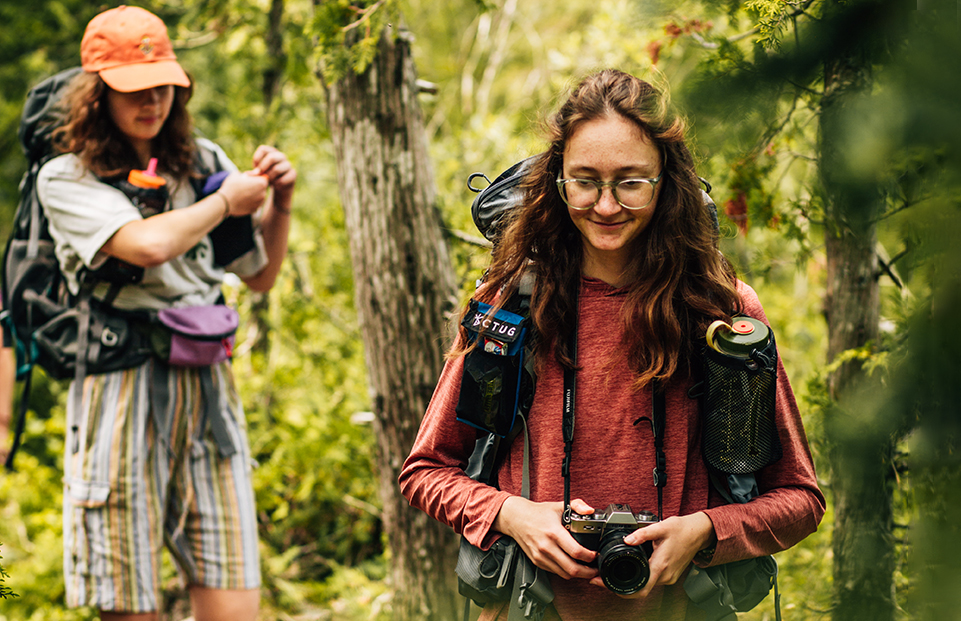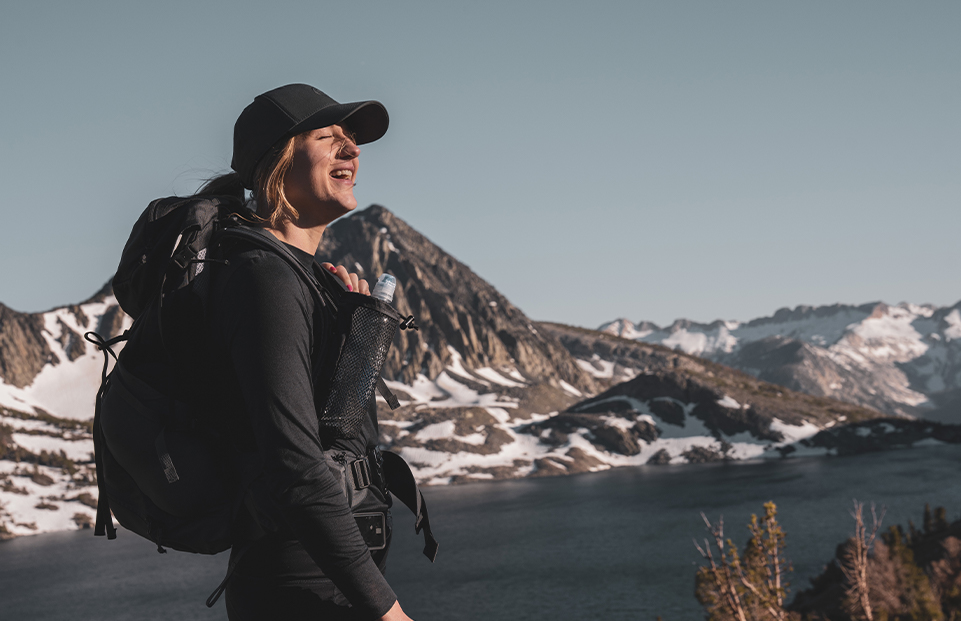You’ve got your shoes and sunglasses on, have a fanny pack on your hip, and you’re looking ready to hit the trails. Then, you go to put on your backpack and think, “Why is it so heavy?”
It can be easy to get carried away when it comes to packing for your hiking trip. While adding a few extra items to your backpack might not seem like a big deal while packing, you’ll wish you hadn’t taken that giant coffee tumbler when you’re several miles into your hike and feeling those few extra ounces.
Well, no worries—we’re here to teach you all the best insider tips and tricks for keeping your pack base weight down. Keep reading, and we’ll teach you the wondrous ways to keep your backpack nice and light for your hiking trip.
CTUG Tip: How long are you going for?
Before you can even start considering what to pack, you need to determine how long your hike is going to be. If it’s under a day, you know immediately that you don't need to worry about sleeping gear and other backpacking essentials. However, if it’s going to be for a few days, weeks, or even months, then there is more gear you’ll need, all of which will add to your base weight.
The base weight of your pack refers to the weight of your pack with everything you plan to carry in it, minus consumables (i.e., items that will be consumed entirely while on the trail).
A good rule of thumb is as follows:
- For overnight backpacking treks, your pack should not exceed 20% of your body weight
- For day hiking, your pack should not exceed 10% of your body weight
However, those are just general rules. Your own personal preference will help you determine how light you want to travel. It’s also equally essential to take note of what the trail is going to be like. Is it completely flat terrain, or are you going to be putting your quads to the test by walking uphill most of the time?
With these factors in mind, let’s discuss how you can make your trip more enjoyable for your back.
1. Choose the best backpack
The best place to start when it comes to hiking is your backpack. For most trips, you should only be carrying a backpack that weighs no more than 2–3 pounds by itself. When shopping for one, consider the materials used, how many compartments there are, and if it has a frame or not.
While many diehard ultralight thru-hikers will insist an empty backpack should never weigh over 2 lbs, it’s always important to consider your own preferences.
While an extra pound (even an extra few ounces) will make a serious difference on a month-long trek, it won’t hinder you quite the same way during a weekend backpacking trip. Considering your trip length and terrain, as always, is essential.
While there is no shortage of lightweight hiking packs, finding the right one for you can take some looking into. Many brands focus on lowering their pack's weight at the cost of durability and quality, while others offer sturdy, comfortable packs that are far too heavy.
For those looking for the ultimate combination of lightweight and durability, check out CTUG’s collection of ultra-lightweight backpacks.
2. Forget the kitchen sink
Going hiking is a great way to disconnect from everything that is going on in life and reconnect with nature. However, it can be very hard not to pack a few simple luxuries that we feel would make the trip easier.
One luxury you can easily skip is bringing too many dishes. Instead, just bring one pot to cook your food and eat directly from. Not only will it make your backpack lighter, but this hack also has the added bonus of fewer dishes to wash! We recommend looking through Jetboil’s stove systems!
However, it comes to choosing your cooking set, leaving everything behind isn’t the only way to lighten the load. It’s also important to pay attention to the material it’s made from. While stainless steel pots and pans are sturdy and affordable, they’re also super heavy. The same cooking setup made from aluminum will weigh much less (and it won’t break the bank, either).
3. Stay paperless
Most of us can agree that the feeling of picking up a hardcover book is like no other. While you may be tempted to grab your favourite book for when you’re going to settle down for the night or throw a few guidebooks into your pack in case you need to check something on the go, we advise against it.
If you’ve got literature to take with you, a better option is to invest in an e-book reader. This way, you can carry all your favorite books with you at only a fraction of the weight. Better yet, to keep your back as light as possible, skip the e-reader and load everything onto your phone.
You can download an e-reader app for all your favorite books and snap pictures of whatever guidebook or map pages you need before you head out.
4. Leave the change at home
Another way weight can easily add up is by bringing your regular wallet along that’s filled with loose change, old coupons, and far too many cards. The best way to combat this issue while still carrying some cash is to carry an ultralight hiking wallet.
What’s great about these is that not only do they come in three different sizes, mini, medium, and large, but they are also water-resistant. So, if you decide to keep it old-school with cash instead of a card, you don’t have to worry about your fivers getting drenched.
An added bonus is that these ultralight hiking wallets are also roomy enough to fit in a chapstick or some gum!
Ultralight Hiking Gear: Final Thoughts
Whether you’re looking to achieve your ultralight hiking goals or just shave a few pounds off your base weight for your next trek, lightening your load is always going to be a process. The best way to figure out what items you can leave behind and what weight is most manageable for you is through trial and error (or trail and error, if you will).
The more you hike, the more you’ll get a sense of what works for you. Keep learning and looking for opportunities to swap out gear for lighter options. When you get back after a trek, make note of any items you left unused. Next time you go out, maybe you’ll find you’re comfortable leaving those items behind.
To learn more about our high-quality lightweight hiking gear, contact Chicken Tramper Ultralight Gear at info@chickentrampergear.com or browse our collection online!



